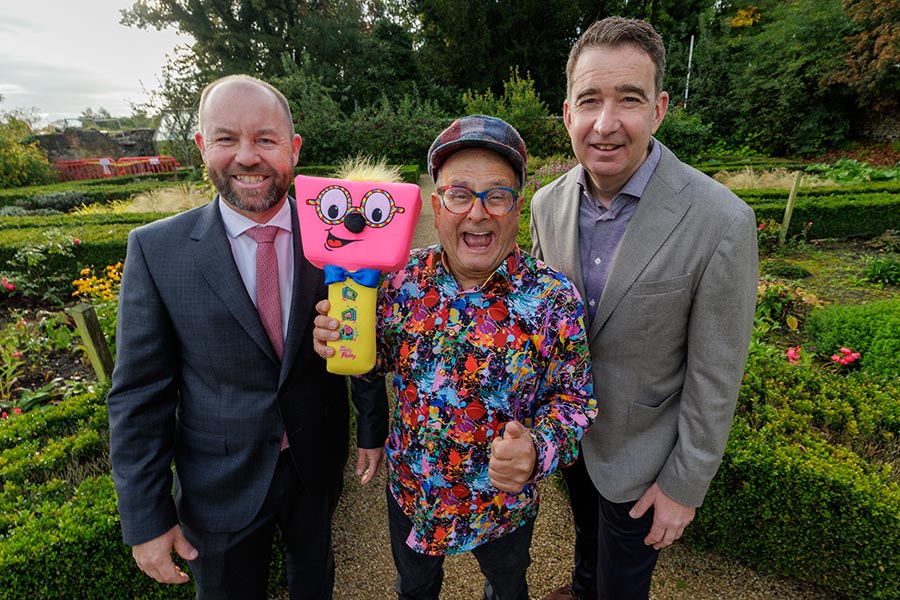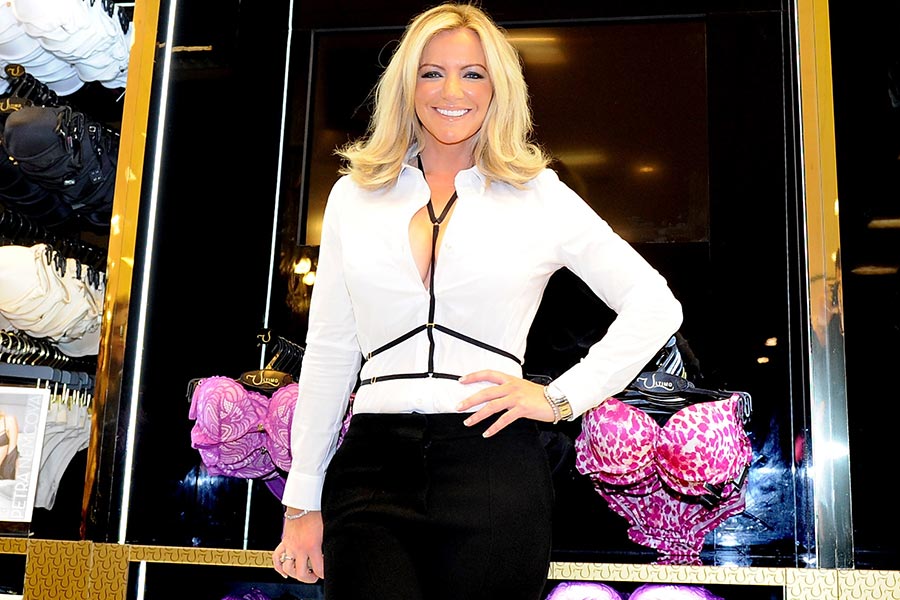How much does it cost to establish a new whiskey brand? At Powerscourt Distillery, the tally is €20 million and counting.
The Powerscourt Estate beside Enniskerry in Co. Wicklow is a popular destination for day-trippers and bus loads of overseas tourists. The tiered gardens with all their steps make for a pleasant amble, there’s a well-stocked garden centre with nick-nacks, an Avoca foodie heaven and a decent café for lunch or afternoon tea. Now there’s another attraction – a whiskey distillery with visitor centre into which has been poured substantial private investment.
The Slazenger family who own the estate are the landlords for Powerscourt Distillery. The family doesn’t own the distillery venture but they are investors. The Slazengers have placed a big bet on the future of the Fercullen Whiskey brand, which for the moment sells bought-in whiskey stock in the visitor centre shop, as the distillery only started casking last year.
The whiskey is called Fercullen because Irish Distillers has a whiskey brand called Power’s, so Powerscourt Whiskey was never an option. Noel Sweeney, the Master Distiller at Powerscourt, previously worked at Cooley Distillery and knew where to source whiskey stock and apply a finishing touch to get Fercullen going. The Fercullen is top class and whiskey connoisseurs will enjoy the tipple.
Storied History
Powerscourt Estate has a storied history. The Slazenger family trace their wealth back to wooden tennis racquets and other sporting goods, long since sold off. Ralph Slazenger, who died six years ago at the age of 91, was the son of one of the two brothers who founded the business. He moved from England to Ireland in 1953 to escape wealth taxes, settling first at Durrow Abbey in Co. Offaly before taking on the Powerscourt house and its estate in 1961.
Ralph and his wife Gwen restored the run-down house and the gardens, overcoming the setback of a blaze that gutted the Georgian mansion in 1974. When armed robbers came to call in 1982, the Slazenger couple departed for the Isle of Man, leaving the estate in the care of their five children.
Apart from maintaining the house and gardens, to date the Slazengers’ major investment has been in a golf club on the estate, which is largely in family ownership. The main operating company, Powerscourt estates Ltd, had turnover of €6.3m in 2017 and booked an operating profit of €2.4m, on a par with the year before. Dividends to family members runs to €700,000 p.a.
The idea for a distillery on the estate came from local entrepreneurs Gerry Ginty and Ashley Gardiner. They identified an old mill house adjacent to the garden centre as a suitable site. Boutique whiskey distilleries are now ten a penny in Ireland, and at first that was the route Powerscourt Distillery had in mind. Then Gardiner hooked up with an old school pal, Alex Peirce, whose father know a lot more than Gardiner about making whiskey.
Mike Peirce (77) is a successful technology entrepreneur, best known for Mentec, the company he founded. Now resident in Guernsey, Peirce became involved in a startup whisky distillery on the island of Arran in Scotland in the mid-1990s. Queen Elizabeth opened the Arran distillery visitor centre in 1997, so Peirce had a lot of expertise to share with the Powerscourt startup in Wicklow.
Change In Strategy
Alex Peirce, son of Mike and now CEO of Powerscourt Distillery, takes up the story. “Gerry and Ashley had the initial idea and secured planning permission for the mill house conversion. They were being advised on the financial side by Roger Duggan, who also knew me, and Roger brought us together at the start of 2016. When my father and I reviewed the project, we decided it had potential, but there had to be fundamental changes in the strategy.”
From the Isle of Arran experience, the Peirces knew the best suppliers for the distillery hardware and build. They also insisted that the Powerscourt estate owners should have skin in the game.
“We brought both groups over to Arran to familiarise them with the scale of plant required and the reasons why scale matters. If you look at what we have now in Powerscourt in terms of capacity, it would be very similar to what's in place in Arran. From February to August 2016, we had sort of a dance together and then things really started,” Peirce adds.
From August 2016 to December 2017, Powerscourt Distillery raised €10m in equity funding. The Slazengers ponied up €3.5m and the Ginty, Gardiner and Peirce families parted with substantial funds too. A large chunk of the initial ten bar was raised from EIIS tax-break investors through Baker Tilly and Invesco. The initial funding went towards the distillery build (€3.2m), and the whiskey stock (€4.9m) to provide the launchpad for the Fercullen brand.
Through 2018, Powerscourt Distillery raised a further €9.3m in equity. The Slazengers followed on with another €2m and the company sourced €3m from various high net worth individuals. EIIS funds were tapped for another €4.3m, plus €1.5m in March 2019, bringing total risk capital in the venture to north of €20m.
There will be more cash calls in the years ahead. Powerscourt wants to play in the whiskey major leagues, not with Jameson and Bushmills but on the next rung down with Teelings in Dublin and Walsh Whiskey in Carlow, with annual whiskey output of one million litres a year.
To get there, the colourless spirit distilled from grain has to be casked for at least three years, where the alcohol gets its flavour and colour. On the Powerscourt estate, beside the distillery and visitor centre, there’s an enormous warehouse where 100 new casks of Fercullen are added every week.
The working capital requirement for Powerscourt Distillery is enormous. “It’s a brutally hard business,” says Alex Peirce. “There is no escaping the horrendous obstacles of the first decade. In our case we’re fortunate to have continuity, and that was important from the get-go. When you make chocolate, it comes off the line and it’s ready to go. With whiskey you have many years of storage, not in cages but in wood, with the associated insurance cost. It’s massively capital intensive and you can never have enough funding. You also need the right type of investors to see you through.”
Visitor Centre
The purpose of the visitor centre is to provide the budding whiskey venture with some cashflow, spread the word about the Fercullen brand and sell a few bottles. It will take more than that for the venture to prosper. Alex Peirce and his colleagues also have to find trade buyers at home and abroad for the new brand, in an Irish whiskey arena where the competition has deep pockets.
Besides Pernod Ricard (Jameson, Paddy etc) and Jose Cuervo (Bushmills), other drinks majors now in the Irish whiskey space are Suntory (Kilbeggan, Lockes), William Grant (Tullamore Dew), Brown Forman (Slane Castle), Bacardi (Teeling), Illva Saronno (Walsh Whiskey), and Quintessential Brands (Liberties Whiskey).
Investors in Powerscourt Distillery have bought into the belief of Mike and Alex Peirce that in the long-term scale is vital. “If you want to go international with your brand, you have to be able to support sustained delivery of product for years ahead,” says Mike Peirce.
“There’s a rule of thumb in the whiskey world that you lay down as much stock as you can prudently afford. We’re currently running two shifts a day, and if we going at full throttle we’d be doing three shifts, seven days a week. Will a time come when we might do that? That obviously is the ambition.”
Whiskey Cask Programme
Individuals can acquire their own private stash of Irish whiskey through the Powerscourt Distillery cask membership programme. The investment costs €7,800 and is limited to 397 casks, each of which has 200 litres of whiskey when laid down. Why not 400 casks? The nearby Powerscourt Waterfall is 397 feet high.
For the distillery, the forward sale of casks provides useful cashflow: if all the casks are sold, the income will be c.€3m. For the cask buyers, they join a club of distillery supporters who will engage with each other as the years go by. There are also discount perks relating to the Powerscourt Hotel and the golf course, as well as early access to future limited and special releases, annual samplings and tasting events.
“Cask membership programmes have worked very well in other markets,” says distillery chief executive Alex Peirce (pictured above). “You can invest in whiskey in lots of different ways, and with this programme there is learning and experience and the opportunity to meet with like-minded people over an extended period of time.”
Casked whiskey matures after three years but Peirce expects cask owners to hold their stock for longer. “We have allowed for the storage of the cask on site for up to ten years,” says Peirce. “At that milestone, how many bottles can you expect? It’s really a function of how strong you want to bottle your whiskey. The rule of thumb is that after ten years in cask you should expect 270 to 300 bottles.
“Many people invest in casks with future family events in mind, where there is a growing family of children, nephews, nieces and grandchildren. They may feel it would be nice to bottle this up as a family special for some future event.”














